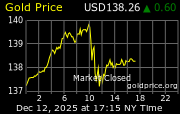Since gold’s decline towards $1,500 last week, physical demand has improved
 Overnight volumes in Asia remained lacklustre, prompting only modest gains. This morning’s trade has seen Gold make some further gains, although the market remains tentative ahead of the Greek austerity vote. We don’t expect much price movement as the markets await the result of today’s vote. In general, Gold have experienced range-bound trading since late last week and it appears that much of the positioning has been completed in anticipation of Greece actually passing the austerity measures.
Overnight volumes in Asia remained lacklustre, prompting only modest gains. This morning’s trade has seen Gold make some further gains, although the market remains tentative ahead of the Greek austerity vote. We don’t expect much price movement as the markets await the result of today’s vote. In general, Gold have experienced range-bound trading since late last week and it appears that much of the positioning has been completed in anticipation of Greece actually passing the austerity measures.We believe the market is positioned for a positive outcome of the vote today. Our belief is informed by market price movement since Monday. The fact that since Monday
(1) European equities in general managed to rebound,
(2) measures such as the VIX managed to push lower
(3) the Euro strengthened and importantly
(4) many European bank equities pushed higher.
Should the measure be passed we could see safe-haven demand for precious metals slow down. However, we believe that this would be temporary. Later this week we expect PMI data (out of the US and Europe) to confirm the weakness of the global economy, which should reignite demand for the safety of precious metals.
Since gold’s decline towards $1,500 last week, physical demand has improved. The buying pattern remains consistent with what we have observed in the physical market for most of Q2:11. Any large price declines are seen as a good buying opportunity for gold, with demand being broad-based across Asia but still centred in India. We remain long gold.
Gold support is at $1,501 and $1,493. Resistance is $1,512 and $1,515.

































